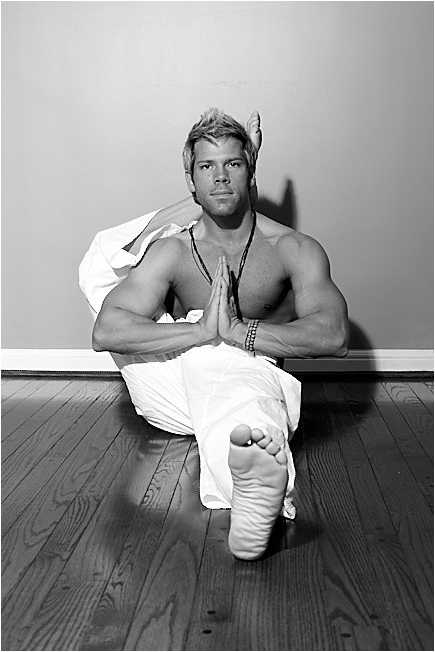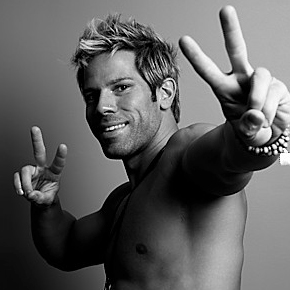THE EIGHT LIMBS OF YOGA
The Yoga Sutras, also known as, “The Eight Limbs (Ashtanga) of Raja (King) Yoga,” was the first fully developed and recorded system of yoga. Created by Patanjali around 400 CE, this system influences much of the yoga that is practiced today.
Although most of the sutras were originally focused on mindfulness, the yoga practiced in the West today seems to focus more on the body Somewhere along the way, it seems, we began to practice the movement of yoga in isolation of its original philosophies.
For those interested in truly integrating the mindfulness of yoga with its movement, I recommend that you read the Eight Limbs of Yoga in their entirety and digest them very slowly. Take time to reflect on it piece by piece so you can implement it into both your practice and your daily life. Wisdom is in the doing. The following, however, is a useful summary of the Eight Limbs of Yoga, which will introduce you to the basic concepts of the philosophy. A deep understanding of yoga philosophy and history will greatly enhance the benefits of your practice and put you on the path to mindfulness and self-realization.
There is a wonderful lesson in Buddhism that applies here:
Once a very old king went to see an old hermit who lived in a bird’s nest in the top of a tree. He asked the hermit, “What is the most important Buddhist teaching?” The hermit answered, “Do no evil, do only good. Purify your heart.” The king expected to hear a long and detailed explanation. He protested, “Even a five-year old child can understand that!” “Yes,” replied the wise sage, “but even an 80-year-old man cannot do it.”
Your biggest obstacle to self-realization is you. As it says in the Bhagavad Gita, “The mind is restless and hard to control but it can be trained by constant practice (abhyasa) and freedom from desire (vairagya). A man who cannot control his mind will find it difficult to attain this divine communion; but the self-controlled man can attain it if he tries hard and directs his energy by the right means.”
Pantanjali’s Eight Limbs of Yoga will help you form the necessary groundwork to get on the right track, but you must decide to confront your problems at their roots. Reading and intellectualizing is not enough. If you want to reap the full benefits of the yoga experience, implement the Eight Limbs into every aspect of your life. You must live it, breathe it and engage this planet and its inhabitants with the lessons below.
The first and second limbs, Yama and Niyama, form your foundation. Here, awareness and realization is established. Yama and Niyama lay the footing for everything to come. A serious student should be mindful of every limb and each of these limbs need constant reflection. As you commit yourself to their study and practice your depth of understanding for each limb will get deeper over time. In our world that perpetuates instant gratification, many people will take short cuts and go straight to the yoga poses. Others go straight to meditation and neglect physical health. I highly recommend starting with Pantanjali’s first two limbs. Your practice will be at its deepest and most fulfilling if the first two limbs are practiced at a high level. If the first two limbs are not practiced at a proficient level the rest of the limbs will be performed at a more superficial and less effective level.
FIRST LIMB Yama (Self-Restraint)
The focus of the first limb is on being an ethical and moral person, and on improving your relationship with the outer world. These values are as important today as they were centuries ago. The Yamas, as they are referred to, are not meant to be a moral straight jacket, but instead are meant to help develop a greater awareness about one’s place in the world. It is not a coincidence that this is the first limb of the practice. When taking steps to transform our inner world, our outer world becomes a total reflection of this effort. There are five Yamas:
1) Ahimsa: Non-violence.
Replace harmful thoughts, speech and actions with that of loving kindness towards yourself and others.
2) Satya: Truth to be expressed in thought, word, and action.
Be honest in your thoughts, words, and actions towards yourself and others.
3) Asteya: Non-stealing and non-covetousness.
Curb desires for things that are not your own. Share the beauty of your thoughts, speech, actions, and material belongings to uplift others instead of stealing and hoarding them for yourself.
4) Brahmacharya: Abstinence from sexual intercourse when not married. Practicing monogamy and not having sexual thoughts about another person who is not your spouse.
It is believed that a life built on celibacy and spiritual studies done by free will, increases energy and zest for life. Celibacy may sound like an unrealistic goal today. It may help to remember that brahmacharya is also about monogamy. When Brahmacharya is fully realized in marriage, the sex lives of both partners improve because the level of trust and devotion deepens their connection. It is important that the sexual activity is an expression based on the highest level of mutual respect, love, selflessness, and wisdom.
5) Aparigraha: Non-possessiveness or non-greediness.
Replace the habit of hoarding with sharing. Do not take without giving back. If you want
something, work for it. This builds appreciation for what you have. This will help minimize the insatiable desire to constantly consume. An appetite that is not wisely disciplined leads to personal ill health, financial debt of poor credit and destruction to the planet’s natural resources.The Greek God Apollo’s motto “Nothing in excess. All things in moderation” is a great way to describe Aparigraha.
SECOND LIMB Niyama (Self-Purification by Self-Restraint and Discipline).
The second limb helps refine your spiritual path. Discipline and self restraint lead to a more orderly and productive life. From the perspective of ancient yoga, texts life is extremely short and we need to make the most of it while we can. This limb gives us guidance.There are five Niyamas:
1) Saucha: Purity of body and mind.
When you develop Saucha (cleanliness), unwholesome thoughts that lead to foul speech and a sick body are cleared.Purity starts with your mind. Speech and action follow. So, the second limb directs you make it a habit to consume both food and mental stimuli that support well-being for yourself and the environment (humanity and the planet). This will allow destructive habits (hatred, greed, and delusion) to dissolve.
2) Santosha: Contentment with what one has.
When you achieve Santosha (contentment), bonds to the material world are broken and authentic peace and happiness are established within.The lack of contentment is often based on a distorted perception of what one has versus what others have. You advance on the path to self-realization when you can be content with your lot, whether you sit on a throne of dirt or gold..
3) Tapas: Self-discipline, sometimes associated with austerity, and being able to conquer the body and mind through mental control.
Tapas literally mean “heat” or “glow”. This refers to a burning desire to accomplish one’s goal despite what obstacles may appear. The commitment to achieving a goal no matter how challenging it becomes builds character. However, note that the highest level of tapas is to complete one’s goal without a selfish motivation. When Tapas are attained, laziness is overcome and willpower is developed for future use.
4) Svadhyaya: Self-study that leads to introspection and a greater awakening of the soul and the source of creation; traditionally studied through Vedic scriptures.
Svadhyaya (self-study) leads to a greater awakening of your true potential, the root of one’s place in this world and how to live in harmony with the Earth and all its inhabitants.
5) Ishvarapranidhana: The surrender to God.
When you accept that all things come from a higher power, pride and egocentric behavior are turned into humility and devotion. This strengthens your practice of all the limbs leading up to Samadhi (the eighth limb).
Asana and Pranayama are the third and fourth limbs, and they relate to heath and longevity, which allow us more time to achieve the ultimate goal of yoga, self-Realization or Enlightenment. The third and fourth limbs are important, as they prepare the body for meditation, which will be the key to calming your mind and discovering your true potential.
THIRD LIMB Asana (Seat or Posture)
Here is a question: If Gandhi is one of the greatest Yogis of our time, does that mean he can touch his toes or bring his foot behind his head? The answer is that it doesn’t matter. Gandhi’s ability to perform the asanas had very little to do with what he contributed to the world as a great yogi. The same applies to you. The practice of asanas is as much about training the mind as it is the body. How you approach your asana practice is often a reflection on how you approach life. Do you keep a sense of peace and calm when a challenge presents itself? Do you break down the impossible into smaller tasks making the whole possible through commitment to and reflection on each of the parts? Do you overcome self-perceived limitations on your own or do you accept support from others?
Your practice of yoga poses should be characterized by two components: steadiness (Sthira) and ease (Sukha). Concentrating on the sound of your breath (Ujjayi, is the most commonly practiced breathing technique in yoga), can provide the steadiness. If you lose your breath, it is most likely because you are pushing too hard; ease off the pose and let the pose cater to the breath.
There is no such thing as a perfect pose; let the poses come like the steps of a dance. Just like in dance, when we focus too much on the mechanics, we let go of the ability to enjoy the music. While the mechanics of alignment are important to prevent injury, never forget the final goal. Feel the music of life flow through you as you do each pose and your body will learn the moves naturally. There are more than enough postures to keep you busy for the rest of your life, so allow yourself to let go of ambition and enjoy the journey. Incorporating a combination of forward bends, back bends, twists, and inversions in your yoga session is optimal for health.
Remember, too that asanas help prepare the mind and body for meditation, relieving tension and protecting the body from disturbances by purifying the nervous system.
FOURTH LIMB Pranayama (Control of Breath)
The English word spirit comes from the Latin spiritus, meaning “breath”.
The breath and the mind are interconnected. Deep, rhythmic and fluid breathing will energize yet calm the mind and body. Rapid, irregular, and strained breathing produces a chaotic and disturbed mind. A calm mind will give you the metal space to make better decisions and a life in which you take control instead of feeling like a victim of circumstances.
Breathing properly is fundamental to our very existence Your brain feeds on oxygenated blood which is supplied with every inhale. If you are unable to draw oxygen into your body, you will become brain dead after a few minutes. On the other hand, proper exhaling helps dispel carbon dioxide. If your ability to exhale were impaired, you would most likely die due to the toxic build-up of carbon dioxide and poison. Stress tends to negatively affect breathing patterns, which contribute to a chain of effects that cause wear and tear on both your body’s nervous and immune systems. In fact, 90 percent of illness is stress-related and for this reason, thus attention to breathing properly is, indeed, a matter of life and death.
FIFTH LIMB Pratyahara (Sense Withdrawal)
Our perception of reality is predominantly influenced by our sensory experience—what we see, feel, hear, touch, and taste. Pratyahara refers to the withdrawal of the senses from external objects and our modern-day need for constant gratification from sensory stiumuli. Our minds are constantly being pulled outward to evaluate all the information the senses bring in. Evaluation involves categorizing what has been perceived; often, we hold on to what we believe is desirable, push away what we believe is undesirable, and ignore what we believe to be neutral. Pratyahara gives our minds a moment to rest and teaches us to be free of the grasping and clinging to the things we enjoy and avoiding the undesirable.
When you throw a pebble into a pond, your reflection becomes distorted by the resulting ripples. Your mind works in very much the same way; every thought creates a ripple that distorts the ability to see your true self clearly. Constantly disrupted by these ripples, you begin to believe that the distorted reflection is who you really are. Practicing pratyahara calms the mind, allowing you to see yourself clearly.
SIXTH LIMB Dharana (One Pointed Concentration)
Asanas, pranayamas, and pratyahara help prepare us for meditation.
When the mind moves from experiencing random scattered thoughts to single one pointed concentration it can then find complete absorption in the present moment. By practicing one pointed concentration, we clear the mind of all distracting thoughts. This can be achieved by focusing on your breath, counting, reciting mantras, observing a candle flame, or an image. Because we are constantly entangled in reliving past memories or living in anticipation of what is to come, it is very seldom that we live in the present moment. It is even less common to be mindful of the present moment with a calm and focused mind. However, this is crucial when trying to achieve self-realization. The power is in the now!
SEVENTH LIMB Dhyana (Meditation)
Just as there are many different types of yoga poses, there are many ways of meditating. Meditation is a form of inner contemplation that allows you to access a state of mind that has bypassed the ego.This is a state of pure awareness of the present moment that is free of judgment. All meditation leads to a state of full awareness that does not discriminate or categorize things in a dualistic manner, that is to say the perception of what is good versus what is bad, beautiful versus ugly, pleasant versus unpleasant etc. When we examine reasons behind such judgments we find many of these beliefs are based on learned behavior and may vary from one culture to another and have no fixed or concrete reality. With consistent reflection and an open mind we can correct our biased perceptions. You will develop that part of you called, “the Observer”. Once grounded in a regular seated mediation it is important to take it into a moving mediation throughout your daily life.
EIGHTH LIMB Samadhi (Total Absorption)
Samadhi occurs when the analytical mind becomes absent and at one with the object of meditation. The object of meditation can be whatever you are focusing on in your mediation that is used to achieve one pointed concentration. The word om, a diety, or a candle flame are all examples of objects of meditation. Total absorption involves the feeling of oneness with all creation, dissolving all lines between the act of meditation and the object being meditated upon.
It is the absorption in the present moment (amanaska) where dualistic thinking is transcended. Many are mistaken by believing Samadhi is the final goal of yoga. It is but a temporary state of mind that we enter based on the conditions that we have nurtured to support it.
It’s useful to remember that every moment in your life gives you an opportunity to practice the eight limbs. Learn at your own pace, but stay focused, consistent, and enjoy the journey!



